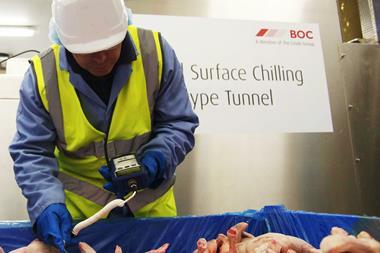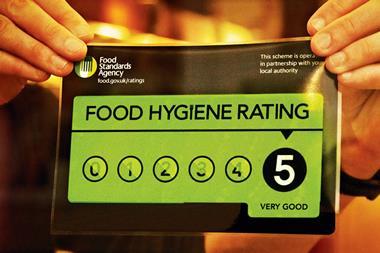
New research published by the Food Standards Agency last week has ruffled a fair few feathers in the poultry sector. The report revealed a third of consumers want retailers and processors to do more to reduce campylobacter – and while the FSA insists it has no intention of changing campy targets, some in the industry suspect publishing these findings is the first step towards doing just that.
The survey of 1,295 people and further qualitative polling suggested there was considerable appetite to go for a tougher target than the FSA’s current (or to be more accurate 2015) goal, which is to reduce the numbers of the most contaminated birds in UK poultry houses from 27% to 10%.
Many of those polled called for the contamination level target to be reduced to “as close to zero as possible”.
The FSA published the poll results in the same month it has restarted testing on its campylobacter survey of supermarket chicken (which was suspended in April over fears its data might no longer be accurate).
That’s left many in the poultry industry scratching their heads at exactly what it is trying to say with these findings.
It comes as contamination levels have already fallen from 19% in December 2014 to 11% in February this year, and against the background of an often fractious relationship between the FSA, retailers, and poultry processors over the past couple of years.
There are no changes planned to campylobacter targets, the FSA insists, but given the timing of the research, and the fact the FSA’s own director of policy, Steve Wearne, said last week it was “good to see customers, and not just the FSA, demanding action and information from retailers”, it’s no surprise that many worry there’s a subtext to the whole initiative.
Cynics have been quick to suggest the survey is little more than the FSA trying to “justify its own existence”, while others say they are frustrated the regulator presented the information in in a way that made the industry look like it wasn’t working hard enough to eradicate campylobacter – despite making huge strides in the past year.
Others still bemoan the fact the FSA remains reluctant to tackle campylobacter in food supply chains other than supermarkets, and has done little work to quantify the risks of the bug, particularly its cost to the NHS, with estimates varying wildly.
“It just feels like they are going after an easy target,” said a source last week, “and if you read the research it feels like they’ve rather led the process and then cherry-picked the desired answers.”
That is one way to look at it. But the strength of consumer feeling expressed in the research is at times compelling. The industry may not always see eye to eye with the FSA in the campylobacter reduction campaign, but underestimating consumer sentiment on the issue may prove costly in the long run.



















No comments yet